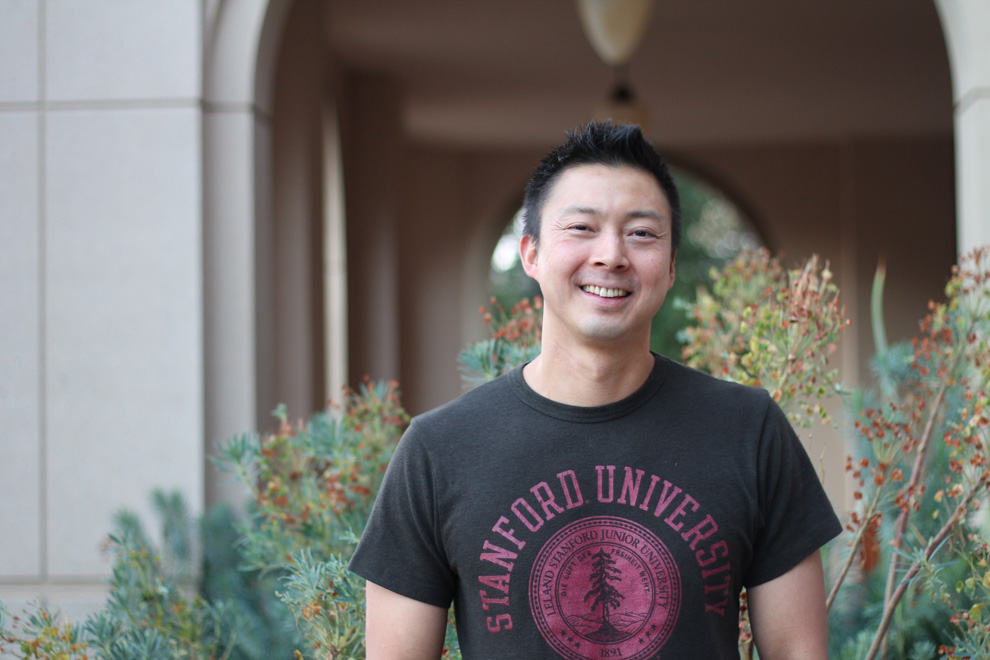
An exploration of the struggles and hopes of LGBT athletes and the visual medium as a means of social change will occur on Tuesday night, Nov. 17, as fourth-year doctoral candidate and interdisciplinary graduate fellow Jeff Sheng discusses his photography book, “Fearless.”
The event will be held in Kissick Auditorium at 7 p.m., presented by the Clayman Institute for Gender Research. “Fearless” collates photos from openly LGBT athletes across the U.S. and Canada.
Sheng’s personal life provided the catalyst to start the project. Sheng, who is gay, played tennis in high school and advanced to the collegiate level at Harvard. However, while in the process of coming out during college, he quit the tennis team due to homophobia that he had perceived in athletics at that time.
Sheng saw a chance to work on a photography project about LGBT student athletes, which he has done ever since; those photos have now been compiled into the book “Fearless.” The book begins with Sheng describing his early experiences and the eventual creation of the Fearless Project; pictures and text continue to intertwine throughout the book.
Sheng photographed students in many different athletic environments across the U.S. and Canada, with colleges ranging from Division I to Division III. The project features two Stanford athletes, including Josh Dixon ’11, a two-time NCAA National Champion varsity gymnast currently training for the Rio 2016 Olympics.
“The [Fearless Project] is a shining example that acceptance and authenticity are very powerful things,” Dixon said in an email to The Daily. “Through the lens of sport, the stories highlighted and intertwined with Jeff’s story are an integral part of this message. Whatever the sport for whatever viewer, there is a certain amount of inspiration that can be drawn at any given moment.”
Sheng started doing exhibitions around the country about 10 years ago. When he had access to high schools and college campuses, he would look for LGBT athletes to volunteer for photo shoots. There was no rigorous selection process; rather, Sheng was willing to photograph whoever was interested. Sheng made sure all the athletes were out to some extent to make sure that the process was a comfortable one.
“I know that coming out can be a really delicate and emotional process for many people, I want to make sure that I don’t add a complicated layer to everything,” Sheng said. “So I always double check to make sure that they are comfortable with being in the project. Especially when the work is going to be shown at campuses around the country.”
Sheng recalls one particularly memorable moment from a photo shoot in Connecticut, where he was photographing a pair of gay twins in high school. At one point in the shoot, the twins’ mother approached Sheng. Although Sheng was initially concerned that the mother would voice an objection to the photography process, the encounter was much more positive.
“This really polite woman comes up to me and just says ‘Mr. Sheng, I know my sons didn’t want me to be here but I had to, because I wanted to say thank you for all the work that you’re doing, and for making society a safer place for my two boys.’ And I was totally, totally awestruck by that,” Sheng said.
Sheng says the book is also an exploration of the cultural changes that evolved over the course of the book’s development in regards to acceptance of the LGBT community, culminating in the recent national expansion of same-sex marriage rights in the United States. As Sheng worked with his designers and publishing team to prepare the book, they worked to reflect the change taking place over time.
“There have always been LGBT athletes in sports, but the fact that many prominent, and visible elite level/Olympic/professional athletes have come out, [means that] the conversation has been more widespread and it goes to show that the previous hush-hush “don’t ask don’t tell” sentiment about sexuality in sports is slowly being put to rest,” Dixon said via email.
Sheng said that he recognized that his audience would contain both athletes and those interested in using visual media for social change, balancing careers in activism and academia, and plans to address both groups.
“I hope that the future for LGBT athletes is one that is ridden of fear of being who they are among teammates and on the field of play,” Dixon said. “When it comes down to it, when you’re able to be comfortable with all of who you are, navigating the road to greatness in sport becomes a lot less treacherous.”
Please contact Contact Skylar Cohen at skylarc ‘at’ stanford.edu.
